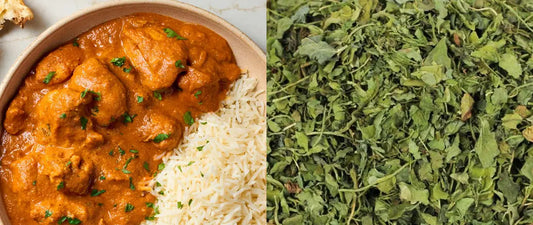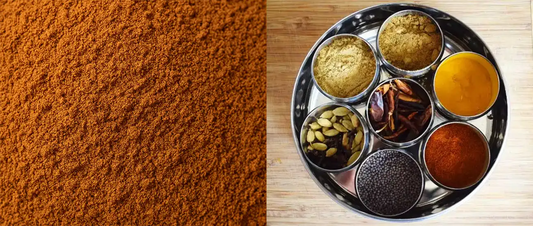What is Asafoetida? Everything You Need to Know
Asafoetida, also known as "hing" in Hindi, is a dried resin spice that's essential in Indian cooking. Despite its strong raw smell, it transforms into a delicious onion-like flavour when cooked and adds depth to many traditional dishes.
What is Asafoetida?
Asafoetida is a dried resin that comes from the roots of a plant called Ferula. This plant grows mainly in Iran and Afghanistan. The resin is extracted from the plant's thick roots and then dried into a hard, brownish lump. It's then ground into a fine powder that's used in cooking.
The name "asafoetida" comes from the Persian word "aza" (resin) and the Latin word "foetidus" (smelling). This gives you a hint about its most famous characteristic - its very strong smell.
What Does Asafoetida Smell and Taste Like?
When you first open a container of asafoetida, you might be surprised by its smell. Raw asafoetida has a very strong, unpleasant odour that some people compare to rotten eggs or garlic. Don't worry - this is completely normal!
However, when you cook asafoetida in hot oil, something magical happens. The harsh smell disappears and is replaced by a wonderful aroma similar to cooked onions and garlic. The taste becomes mild, savoury, and slightly bitter - adding depth and richness to your dishes.
How is Asafoetida Used in Cooking?
In Indian cooking, asafoetida is typically used in very small amounts. Just a pinch (about 1/8 teaspoon) is usually enough for a whole dish serving 4-6 people. Here's how it's commonly used:
Tempering: Most often, asafoetida is added to hot oil at the beginning of cooking, along with other spices like cumin seeds or mustard seeds. This technique is called "tempering" and helps release the spice's flavour.
Vegetarian dishes: Asafoetida is especially popular in vegetarian cooking because it adds an umami flavour that makes dishes more satisfying. It's commonly used in dal (lentil dishes), vegetable curries, and rice dishes like our classic jeera rice recipe.
Digestive aid: Many Indian cooks believe asafoetida helps with digestion, which is why it's often added to dishes containing beans and lentils. You'll find it works wonderfully in our easy chana masala recipe.
Asafoetida Substitutes
If you don't have asafoetida on hand, there are a few alternatives you can use, though none will give you exactly the same flavour. Garlic powder is the closest substitute - use about 1/2 teaspoon of garlic powder to replace a pinch of asafoetida. Onion powder also works well in a similar amount. Some cooks use a small amount of minced fresh garlic or shallots instead. Keep in mind that while these substitutes will add flavour to your dish, they won't provide the unique taste that makes asafoetida so special in traditional Indian cooking.
Health Benefits of Asafoetida
Traditional medicine has long praised asafoetida for its health benefits. It's believed to help with digestion, reduce bloating, and ease stomach problems. Some people also use it to help with respiratory issues like asthma and cough. However, it's important to remember that asafoetida should be used as a spice, not as medicine, and you should always talk to your doctor about health concerns.
How to Store Asafoetida
Because of its strong smell, asafoetida should be stored in an airtight container, preferably in a cool, dry place. Many people keep it in a separate container from other spices to prevent the smell from spreading. When stored properly, asafoetida can last for several years. For more detailed storage tips, check out our guide on how to store Indian spices.


